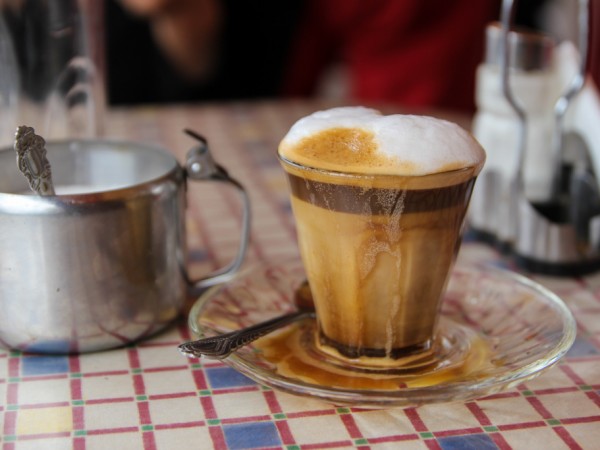

The famous city of Luxor, Egypt, has made it on travel itineraries for thousands of years, offering a host of attractions.
The city itself is not overly charming, hot piercing sun, dust choking streets and it’s share of irritating touts and tourist bred personnel. Aside from a few of the hassles, Luxor has scores of incredible ancient Egyptian sites, monuments, and tombs and temples that can’t be missed!
Figuring out an exact itinerary of what to do in Luxor can be a little confusing; trying to balance time with ancient sites and other variables.
It’s possible to visit most ancient Egyptian sites in 2 days of site seeing, though an extra day allows for a little more relaxation and comfort. I would suggest booking a day tour to the West Bank Sites (see bottom “Standard Day Tour“), and then seeing the East Bank sites on another day.
Note: If you have a student card (preferred ISIC card) all entrance fees are 1/2 the price. Depending on the ticket vendor at the time, it might be possible to persuade for the student price (if you look like a student, it’s worth a shot!).
Temple of Karnak
The Temple of Karnak is a massive ancient site comprising of a number of different temples dedicated to various gods. The great hypostyle hall is the pinnacle part of the the Temple of Karnak. Gargantuan 23 meter high and 15 meter circumference columns line an area of 6000 square meters. The pillars make it seem like you are in the midst of a slot canyon with cliffs rising on either side.
Entrance – 65 LE / 35 LE Student

Temple of Luxor
The Temple of Luxor is easily accessible from the center of town. It was originally founded by Amenophis III but altered in later years by Tutankhamun, Horemheb, and Ramses II.
At night the temple is illuminated with yellow lights to reveal a golden halo around the ruins and statues. Egyptian boys shout and play football into the night in the adjacent courtyard at the base of the once dominant Temple of Luxor.

Luxor Museum
The Luxor Museum houses a collection of some of the most important relics found in temples and tombs around Luxor and the Theban Necropolis. Though it’s not as significant at the Cairo Museum of Antiquities, if you enjoy Egyptian history, it’s worth a visit.
Get exclusive updates
Enter your email and I’ll send you the best travel food content.
Entrance – 80 LE / 40 LE Student
Valley of the Kings
Across the Nile from Luxor, lies the Valley of the Kings, tucked beneath a barren mountain with the top resembling a triangular pyramid.
The valley was hollowed out like an ant hill to bury some of the most legendary Pharaoh’s of ancient Egypt, as a place to secure and ensure eternal life.
Exquisite reliefs, hieroglyphics and spells from the book of the dead for afterlife are plastered onto the walls and carved into the stones.
Photography is no longer permitted so I wasn’t able to take any pictures inside the tombs themselves.
Entrance (for 3 tombs) – 80 LE / 40 LE Student

Valley of the Queens
Situated on the same arid mountain as the Valley of the Kings, the Valley of the Queens is the resting place for a number of royal family members and relatives.
Queens including Nefertari (her tomb costs $5000 to enter), princes and royal children are all represented.
Entrance (2 tombs) – 40 LE / 20 LE Student

Deir el-Bahri
Deir el-Bahri is the mortuary temple of King Hatshepsut, the only female Pharaoh to rule Egypt. The temple, located on the opposite side of the ridge from the Valley of the Kings, is anchored into the rock behind.
The interior of the temple has somewhat deteriorated, but the view from the outside with it’s multiple terraces and colonnades is impressive. Though it dates to around 1400 BC, Hatshepsut succeeded at creating a temple with an extremely modern looking design.
Entrance – 30 LE / 15 LE Student
Medinet Habu
The mortuary temple of Ramses III is known in Arabic as Medinet Habu. The immense structure was centered around Ramses’ cult god of Amun.

Colossi of Memnon
The Colossi of Memnon are two enormous statues of the the Pharaoh Amenophis III. The temple that the statues once marked the entrance to, have since been destroyed, leaving only two parallel statues amidst modern day farms and cornfields.
Entrance – Free

Kushari and Ful
After a long hot day of visiting sites around Luxor, get your fill of Kushari (mix of pasta, beans, and sauce) and Ful (almost like re-fried beans).
Cost – Not much! $1-2 will get you a nice meal!
Hang out sippin on tea and sheesha
Another way to relax in Luxor and all over Egypt is to sit down at 1 of the many street-side cafe’s and sip on some local tea or puff on some sheesha with the rest of the men in the city!
Cost – Tea should cost 1 LE!
Where to Stay:
I stayed at Bob Marley Hostel, 1 of the cheapest guest houses in Luxor. Dorm beds go for about 20 LE / night.
Bob Marley Hostel
E-mail: [email protected]
(002) 010 0653258
For a bit nicer accommodation with great wi-fi, I would recommend Boomerang Hotel. Great ambiance and clean rooms.
Standard Day Tour:
All guest houses and hotels will offer a pretty standard day tour to the West Bank historical sites near Luxor. I booked through the Bob Marley Hostel, getting student price, which also included entrance fees. Our guide bought all the tickets so that we didn’t even need to deal with officials, just went from place to place in a minivan.
This is what our tour included:
- Van pickup from the guest house at around 8 am.
- 30 minute drive to the Valley of the Kings, 3 different tombs; Ramses III, IV, and IX
- Al-Deir Al-Bahari Temple (Temple of Hatshepsut)
- Valley of the Queens, Entered 2 tombs
- Colossi of Memnon
Cost for entire trip (including entrance fees) – 220 LE (Adults), 150 (Students), Prices may fluctuate depending on where you book.
Get exclusive updates
Enter your email and I'll send you the best travel food content.



